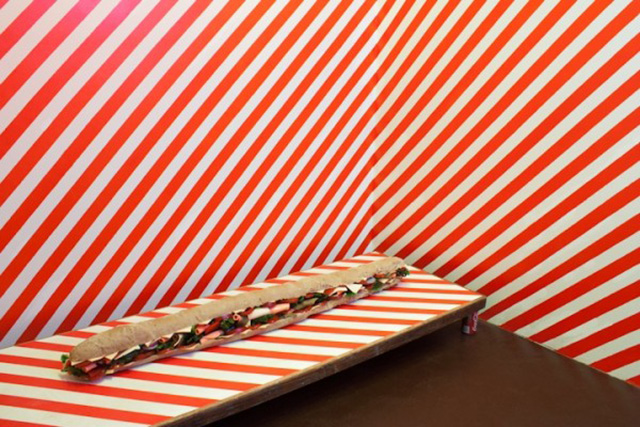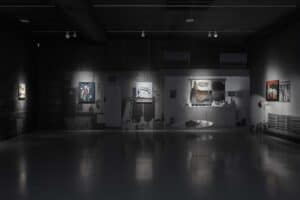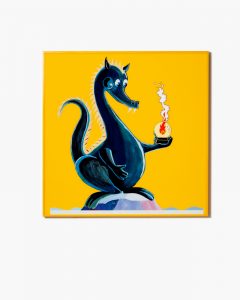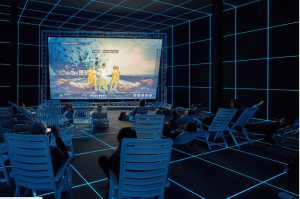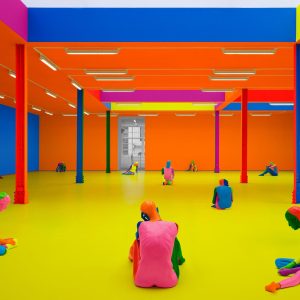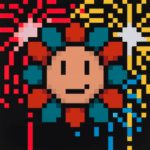
‘As is Wet Hoagie’ will open to the public on the 22nd of August @OKO Gallery in New York
False eyelashes, smashed cellphones, and an individually wrapped pickle are all things seemingly for sale at a storefront in the East Village. Though the display beckons with illuminated neon signs that say “Hoagie” and “Hell Here,” the interior is otherwise dark. Peering in from the outer window is a mind-bending experience. Inside the space, there are two more storefronts, one behind another behind another — brick façade, window crammed with junk, and all. Beyond the final door we can catch a glimpse of a room with red-and-white diagnonally striped wall paper, and on a low platform an enormous hoagie sandwich.
Nothing here is in fact for sale at this many-layered storefront, except the whole assemblage itself. It is an installation called “As Is Wet Hoagie,” by artists Alex Da Corte and Borna Sammak at OKO Gallery, a tiny spaec that is the grittier younger sister to the Upper East Side powerhouse Luxembourg & Dayan. And though the installation went up on July 13, the gallery door is currently locked and it can only be seen from the street until August 22, when its door will open at last.
Ideally meant to be viewed from the outside, the show with its multiple windows crammed with odd items riffs on the way bodega environments accumulate mass, have inconsistent narratives, and serve a variety of needs within a given community. “It’s not about beauty as much as it’s about convenience,” said Da Corte, “trying to understand what starts a deli that sells guns on the side, or knives on the side. How do these things grow?”
The giant hoagie at the back of the store is both a humble personal keepsake — both artists are from Philadelphia where hoagies and cheesesteaks are the source of great local pride — and a symbol of a mythical ideal.
The chaotic, vibrant nature of the show follows the spirit of a line of idiosyncratic exhibitions — including Julian Schnabel and Dan Colen — that have come before it at the gallery since it launched in 2012. OKO’s curator, Alison Gingeras, has planned it that way to ensure that they resonate with the eclectic vibe of the neighborhood (the space that OKO gallery now fills was formerly a vintage jewelry store called Magic Fingers). As per Gingeras’ dictum, the Schnabel exhibition, showed four works, from 1978 – 1981, but one at a time.
Read the full story on: www.blouinartinfo.com
